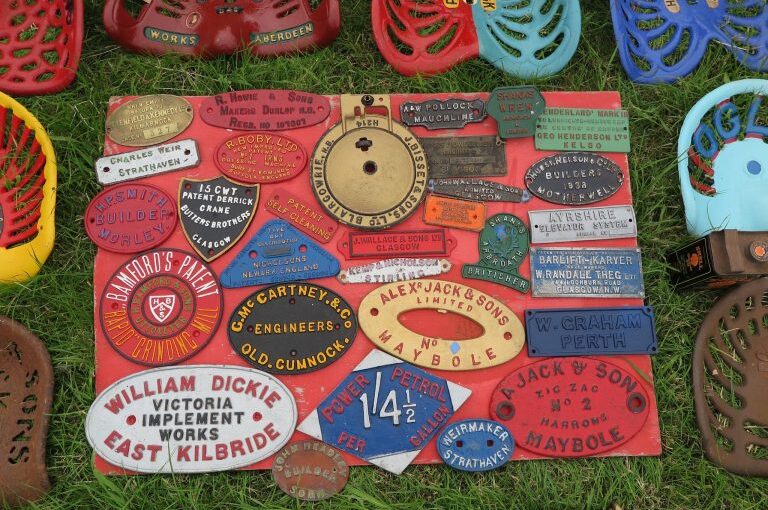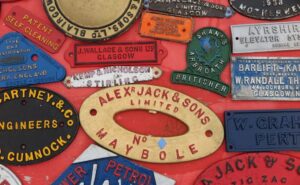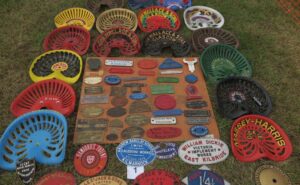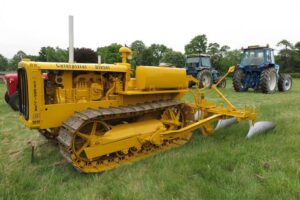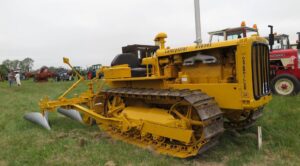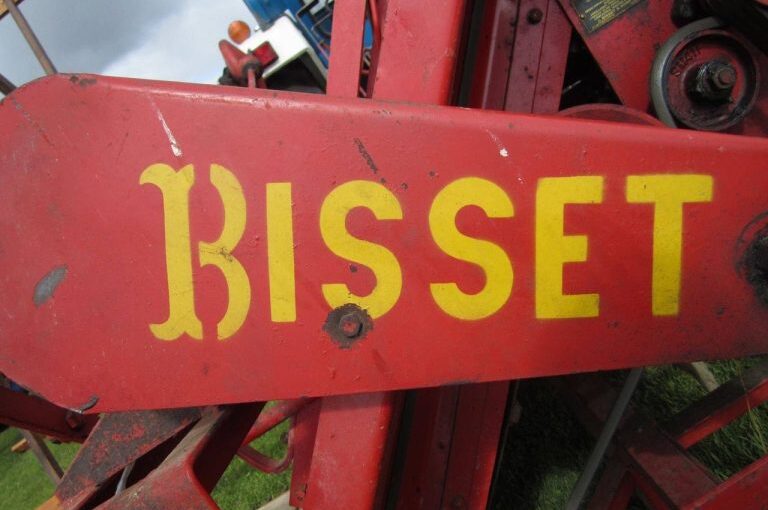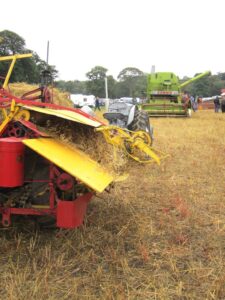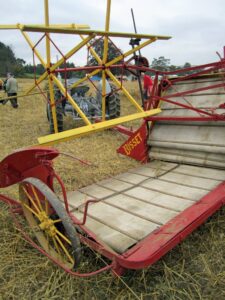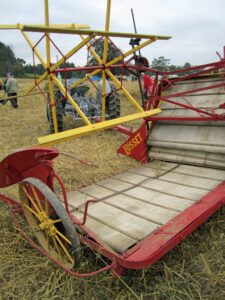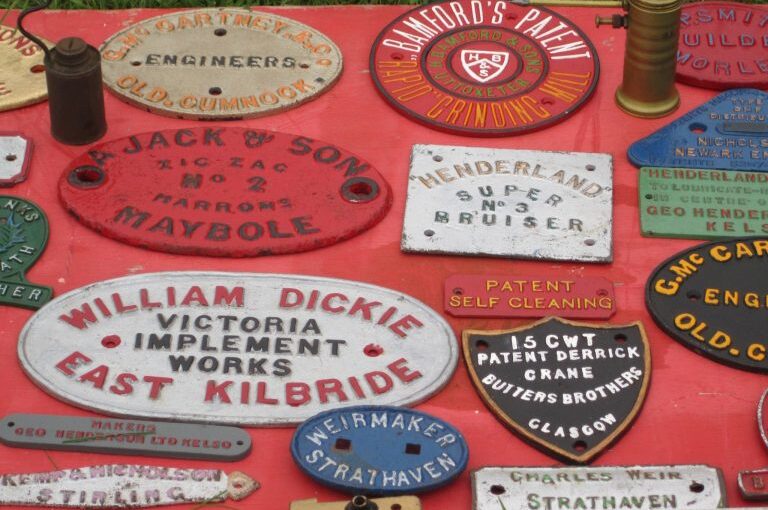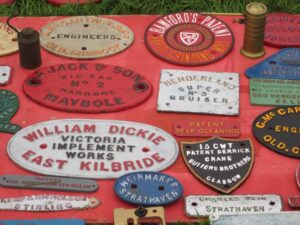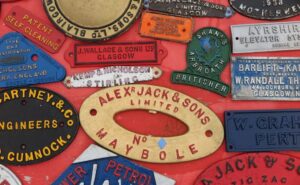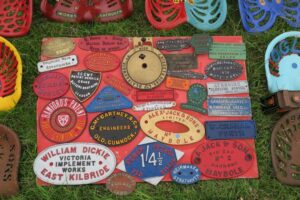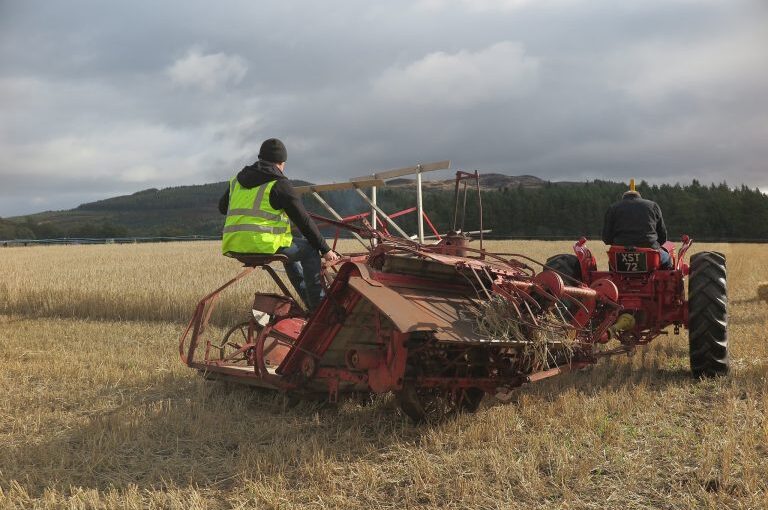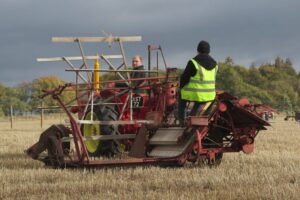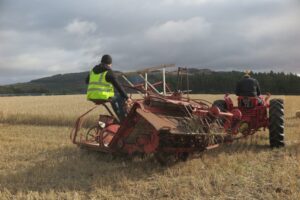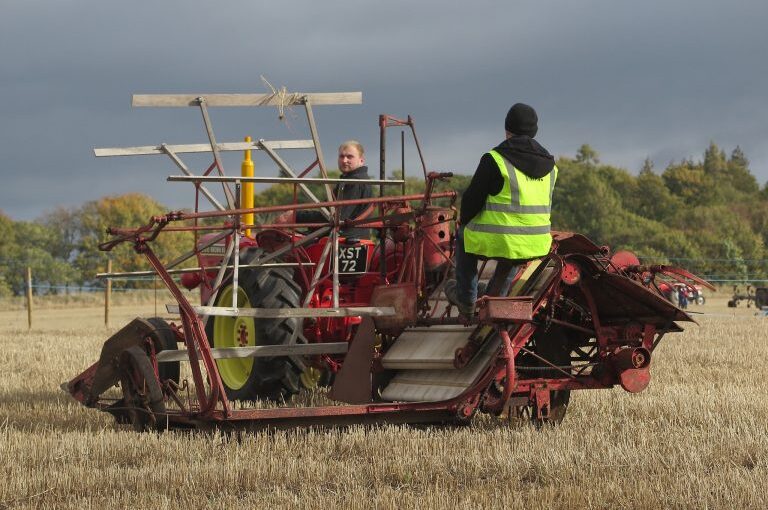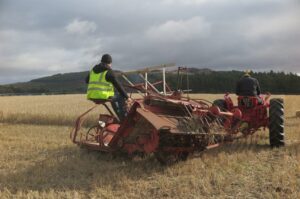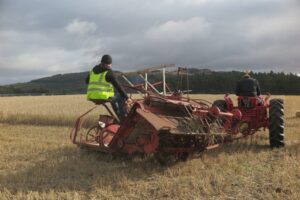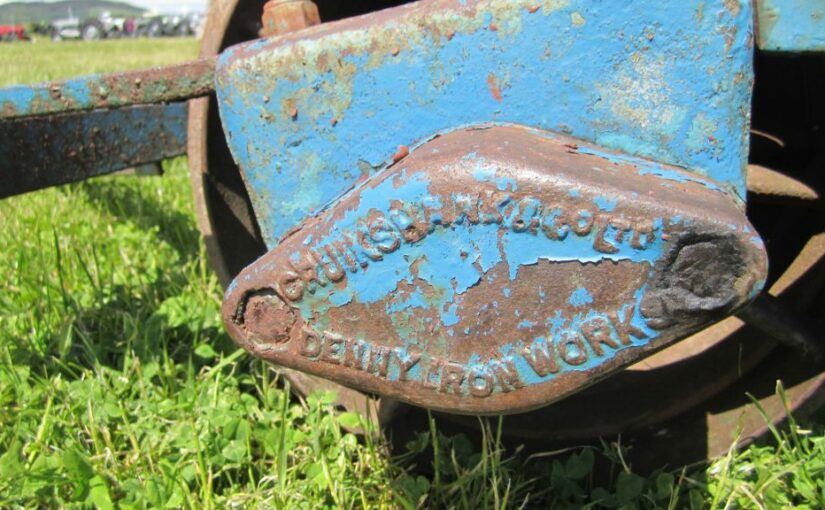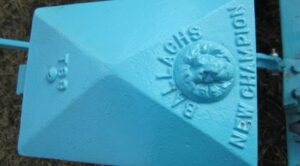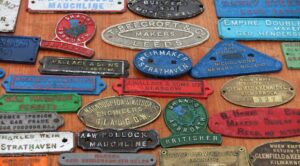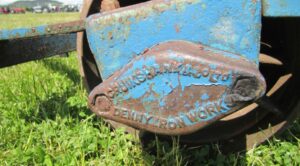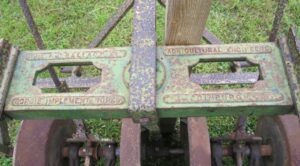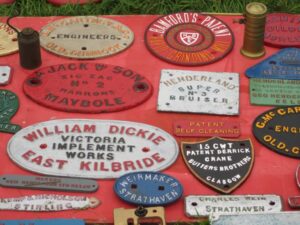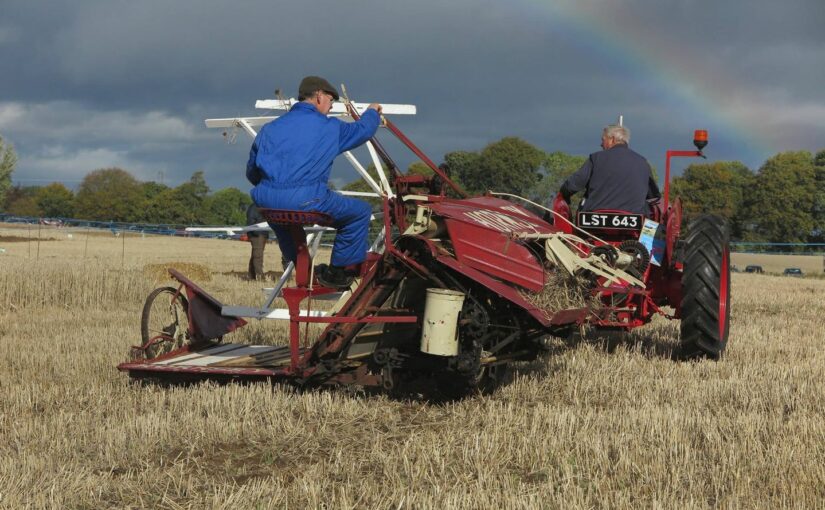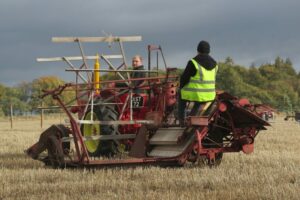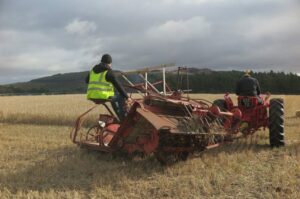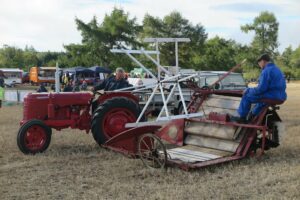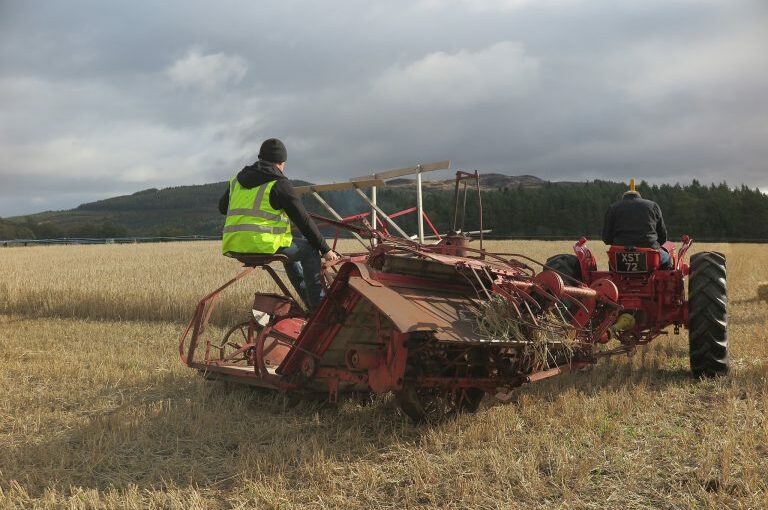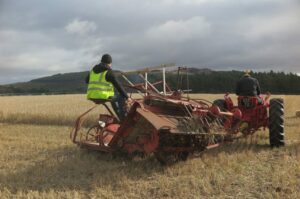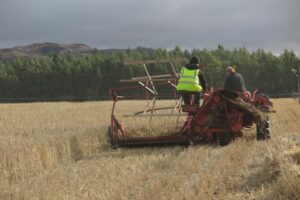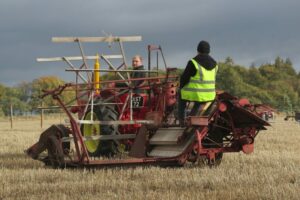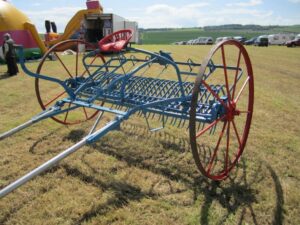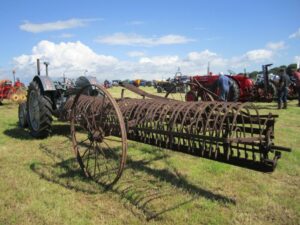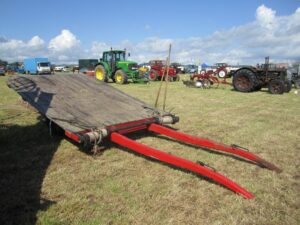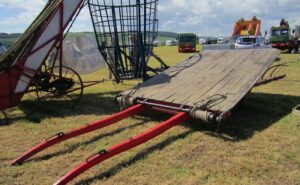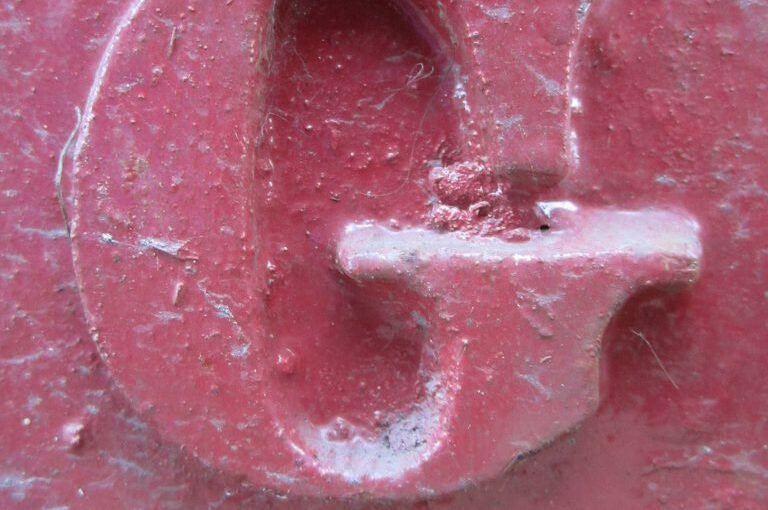The Perth Show was an important place for the exhibition of implements and machines, especially by local makers and dealers. They included locally important ones that were exhibiting the newest implements and machines.
So what could the Perthshire agriculturist see at the Perth Show of 1938? Actually, a lot of key makers selling power machinery and innovative implements and machines that were seeking to and succeeding in making the work on the farm easier and more cost effective to undertake (though there were still a number of very labour intensive activities).
The Dundee Courier included a detailed account of the Show in its columns of 5 August 1938. Let’s look to see what the agriculturist could peruse at the Show:
“Increased entries for Perthshire show
Notable exhibitors at to-morrow’s event
Fine implement display
If a substantial increase in the number of entries for the Perth show can be taken as any indication, then agriculture and its associate industries in the Big County are improving rapidly.
Round the stands
Those interested in the business side of agriculture look upon the Perth show as one of their principal events of the season. Hence the reason why there is such a marvellous display of stands.
Machines for farm
The advance in development of power machinery, which has made easier the farmer’s task, is amply demonstrated in the varied exhibits shown by Barclay, Ross & Hutchison, the well-known implement manufacturers and agents.
Amongst their exhibits will be shown threshing and barn machinery, engines, tractors, binders, mowers, grain drills, cultivators and row crop attachments, tractor and horse ploughs.
A notable exhibit will be one of the latest flax pulling machines, a machine well worth inspection from all interested in the resuscitation of flax growing in Scotland.
Carts fitted with tyres
Stand no. 3 occupied by Messrs J. D. Allan & sons, Culthill Implement Works, Murthly, will make a strong appeal to all progressive farmers.
A selection of the latest types of carts fitted with Dunlop tyres will be on view, including a coup cart for general purposes, cart for hay or harvest, tipping type with wings and removeable sides, and one for use in connection with turnip cutting for sheep on grassland.
The display also includes two thistle cutters, potato digger with pole and swingletrees, and “Kleensweep” hay collector with steel teeth.
Many other handy implements here are worthy of inspection.
Gas in the country
Although you live in the country, you can now enjoy the advantages of using gas appliances for lighting, heating and cooking with rural gas, the improved form of bottled gas.
Demonstrations will be given, and a full range of the latest appliances will be shown at the stand of W. S. Ferguson & Co., Ltd, Perthshire Chemical Works, Perth.
If you have visited the Empire Exhibition at Glasgow you may have noted the fact that rural gas is in use for cooking and water heating in the “modern” cottage at the Clachan.
Electrical equipment
Messrs James Scott & Co., 6 and 8 Princes Street, Perth, who specialise in the electrical equipment of farms and whose installations are to be found throughout Scotland, are featuring on their stand the Lister automatic electric plant, which may be seen in operation and which is an ideal means of providing light and power for farm or house.
Also on view is a milk cooling equipment which will be of interest to those engaged in dairy farming.
The housewife should make a point of seeing on Messrs Scott’s stand the very comprehensive range of electrical appliances, which include stream-lined Elec cookers, electrical ironing machines, refrigerators, washing machines and radio sets, besides a whole lot of the very latest types of small accessories.
Messrs Scott’s representative in attendance will be ready to assist in solving any problems concerning the many uses of electricity on the farm.
Caterpillar tractors
Caterpillar and John Deere tractors will be shown by L. O. Tractors, Ltd, of Perth, who are sole distributors in Scotland for these machines.
Amongst their exhibits will be a model 22 caterpillar tractor, equipped with a toolbar for row crop work, which will be of especial interest to potato growers.
There will also be on show the new small caterpillar Diesel-engines tractor, which has all those features developed over a period of years in the larger sizes of machines.
It may be mentioned that the word Caterpillar is a recognised trade name of the Caterpillar Tractor Co., pioneers in the development of successful and economical track machines.
John Deere tractors are achieving great success everywhere on account of their outstanding simplicity and economy, and farmers interested in tractors will find that a careful study of the features of these machines will be well repaid.
Fordson tractors
The name Fordson is closely associated with farming, and an interesting display of the latest Fordson tractors will be on view at the stand jointly held by Messrs Frew & Co., Ltd, Perth; Messrs John Harper & Sons, Blairgowrie; and Messrs A. McKercher, Aberfeldy.
Included in this display will be a land utility and agricultural tractor and row crop tractor. A comprehensive range of Fordson trucks and Ford cars will also be shown and will have a general appeal. Representatives of the above-mentioned firms will be in attendance to assist and advise interested parties.
Windmill pump
An interesting exhibit will be that of Messrs G. Rae-Arnot & Co., 52 Crossgate, Cupar. It will consist of the “Constoflow’ windmill pump, invented by Mr G. Rae-Arnot, Auchtermuchty, and made by the exhibitors.
It is held that by using this pump on an existing windmill system having a long or corroded delivery pipe more water will be delivered, and when replacing an old windmill head the use of the pump may, in some cases, give sufficient water with a head of smaller size.
A cordial invitation is extended to visit the stand of Messrs G. Rae-Arnot & Co., who will be pleased to give full particulars.
Latest in implements
John Doe, Ltd, Errol, are showing a large selection of farm implements, with all the latest improvements to suit the smallest or largest of farms. Ransome’s motor garden cultivator, complete with implements, will be on their stand. This is suitable for all market garden work. There will also be a power-driven potato sorter with a new pattern double roller conveyor.
Improvements on and attachments for implements and tractors are also to be seen.”
